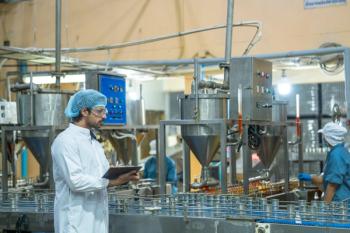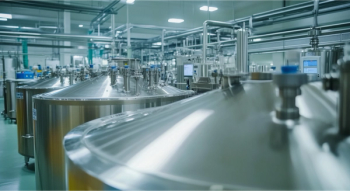
Breaking the Distortion Barrier for ATR Infrared Spectroscopy Measurements
A new model corrects errors in analyzing complex mixtures using ATR FT-IR, paving the way for more accurate chemical insights.
Researchers from the University of Bremen have unveiled a breakthrough method to correct distortions in attenuated total reflection (ATR) spectroscopy data, revolutionizing how complex mixtures are analyzed. Their work combines theoretical modeling with experimental validation to address errors in ATR spectra caused by materials with high refractive indices (1).
A New Era for ATR Spectroscopy
ATR spectroscopy is a cornerstone in analytical chemistry, known for its simplicity and effectiveness in identifying chemical compositions. However, as Rui Cheng, Thomas G. Mayerhöfer, and Johannes Kiefer from the University of Bremen highlight, its accuracy falters when dealing with samples containing high-refractive-index materials like carbon black or metal oxides. These distortions can skew data interpretation, particularly in chemically or physically heterogeneous samples (1,2).
The team’s study, published in Applied Spectroscopy, bridges this gap by developing a theoretical framework that corrects these spectral distortions. Using fundamental optical principles, the researchers built a model that can predict and adjust for inaccuracies, ensuring more reliable data (1).
The Mechanics Behind the Model
At the heart of the research lies the integration of Snell’s law, the Lorenz model, and Fresnel’s equations. Together, these principles describe how light interacts with materials, particularly at interfaces where total internal reflection occurs. The framework calculates the real and imaginary components of the complex refractive index—n(ν) and k(ν), respectively—critical to understanding how light behaves in ATR setups (1).
The researchers focused on mixtures of solid particles and a solvent, with a specific emphasis on systems where distortions are most pronounced. “The critical angle, determined by the refractive index, often exceeds that used in ATR instruments, fundamentally affecting the reflection process,” the authors explained (1).
By simulating the optical interactions at the interface between the internal reflection element (IRE) and the sample, the team developed a corrective model applicable to a wide range of mixtures and conditions (1).
Validation Through Experimentation
To test their theoretical model, the researchers conducted experiments with mixtures of carbon black and toluene. Infrared measurements were performed using an Agilent Cary 630 FT-IR spectrometer equipped with a diamond ATR accessory. The system captured spectral data across a range of compositions, revealing the impact of increasing carbon content on distortion levels.
Comparisons between experimental results and theoretical predictions showed strong alignment. “The development of experimental spectra with increasing carbon content agrees well with theoretical trends,” the authors noted. The model accurately reflected the spectral shifts and distortions observed in practice, confirming its robustness (1).
Applications and Implications
The implications of this research extend far beyond correcting ATR spectra. The model’s flexibility allows it to address distortions across the entire electromagnetic spectrum, opening new avenues for both infrared and non-infrared applications. This capability is particularly significant in fields like nanotechnology, where understanding surface chemistry is paramount.
Moreover, the study’s findings could enhance process analytical technologies (PAT), where real-time monitoring and quantification of chemical compositions are essential. By ensuring accurate spectral data, industries relying on ATR spectroscopy—such as pharmaceuticals, petrochemicals, and environmental monitoring—stand to benefit greatly (1,2).
Future Directions
The researchers acknowledge that while their model is highly effective, it could be further refined. Factors such as molecular interactions between solids and liquids, variations in particle size, and numerical errors were identified as potential areas for improvement. “The development of further specific simulation procedures, elaboration on the curve correction, and analysis of spectral calibration are the subjects of ongoing work,” they wrote (1).
The work of Cheng, Mayerhöfer, and Kiefer represents a significant advancement in ATR FT-IR spectroscopy. By addressing a long-standing challenge in ATR analysis, their model not only enhances the accuracy of current techniques but also sets the stage for new applications in spectroscopic analysis. As they refine their approach, this breakthrough could redefine standards in analytical chemistry, ensuring that ATR spectroscopy remains a reliable tool in laboratories worldwide.
References
(1) Cheng, R.; Mayerhöfer, T. G.; Kiefer, J. Theoretical Calculation and Simulation of Peak Distortion of Absorption Spectra of Complex Mixtures. Appl. Spectrosc. 2024, 0 (0). DOI:
(2) Kim, T.; Cho, M.; Kwak, K., Quantitative Analysis of the Li-Ion Solvation Structure in Li-Ion Battery Electrolytes Using ATR-FTIR Spectroscopy. Anal. Chem. 2024, 96 (40), 15924–15930. DOI:
Newsletter
Get essential updates on the latest spectroscopy technologies, regulatory standards, and best practices—subscribe today to Spectroscopy.





